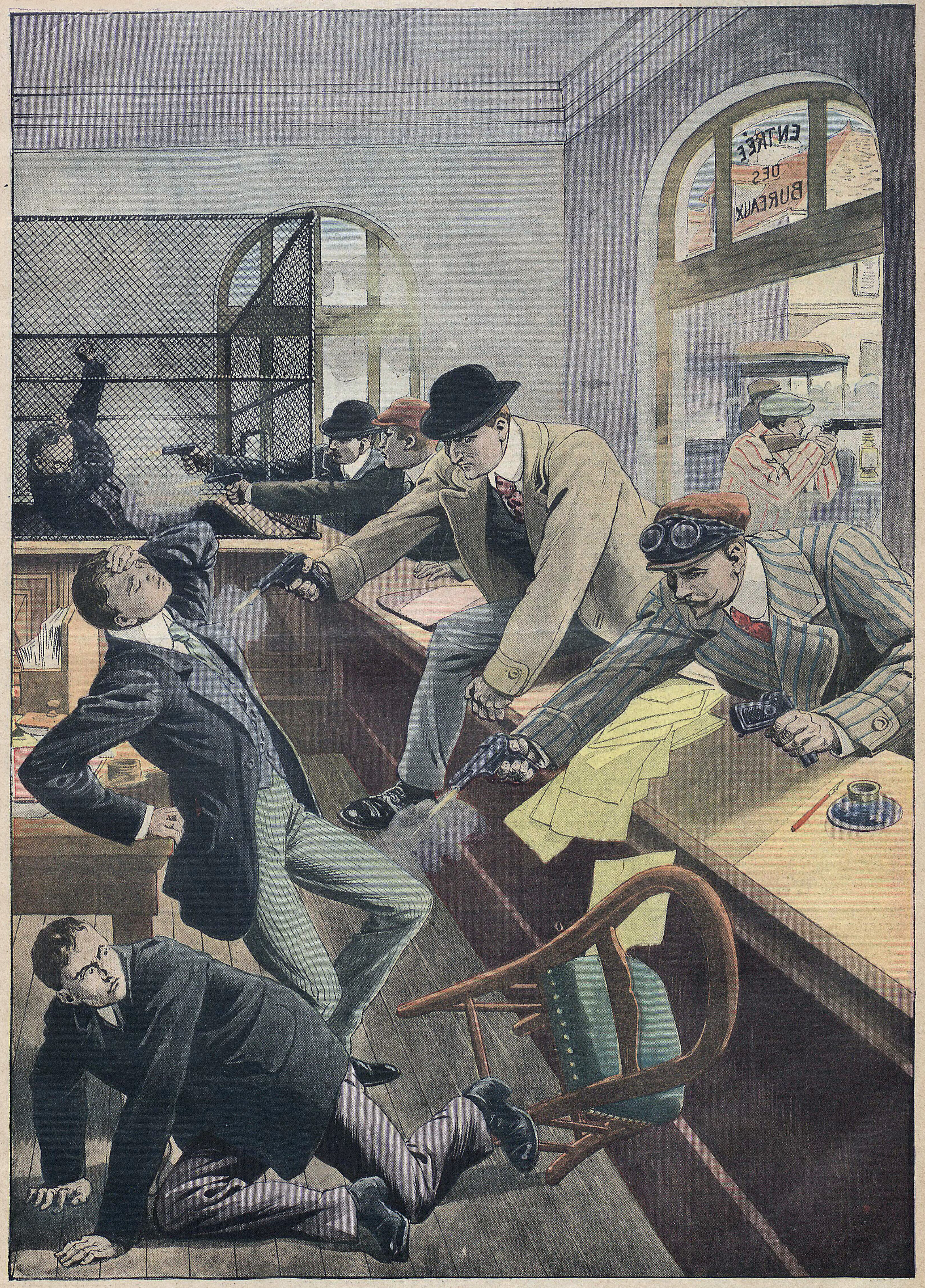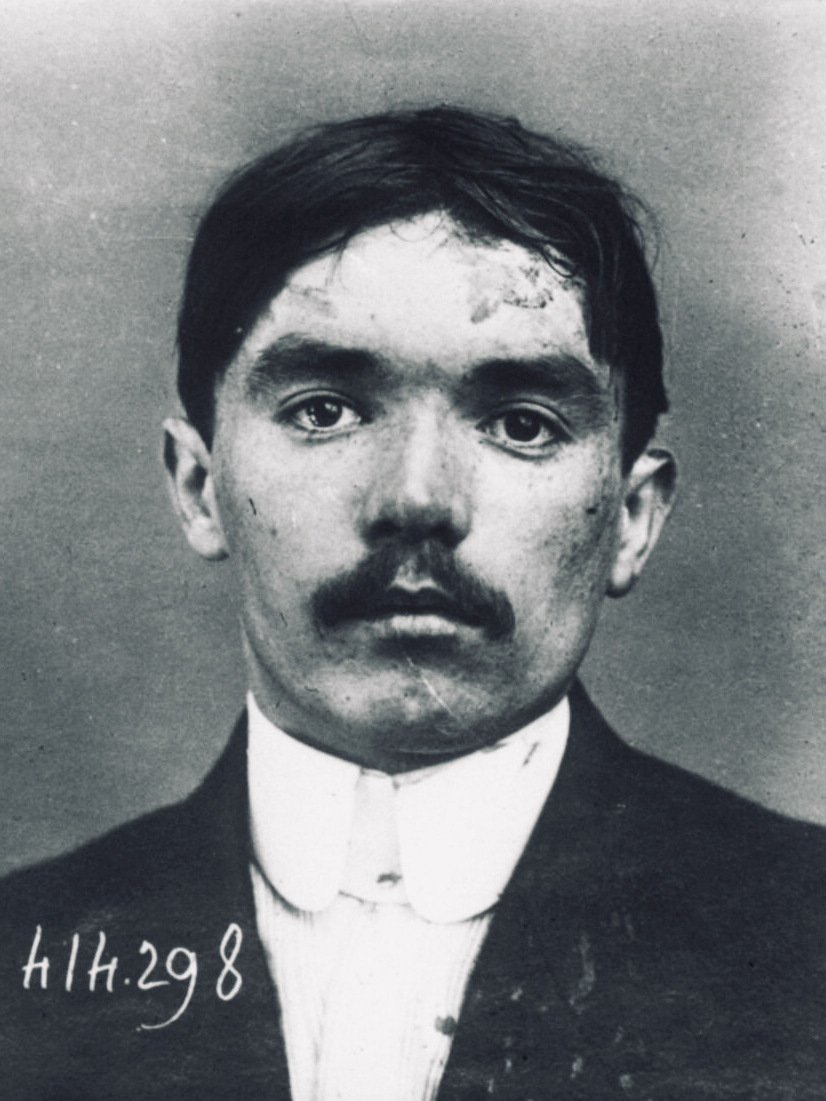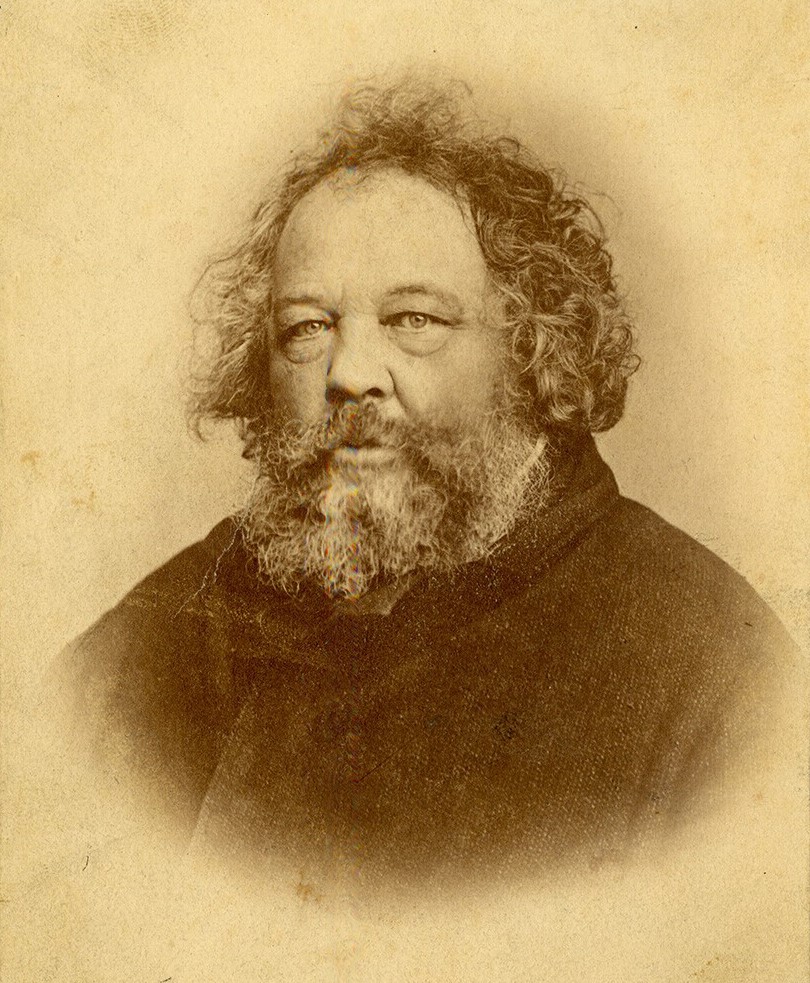|
Marie Vuillemin
Marie Félicie Vuillemin (14 May 1889 – 1963) was a Belgian individualist anarchist, known for her involvement with the Bonnot Gang. Born in Mons, she met the French anarchist Octave Garnier while working at an inn in Charleroi. Jointly suspected of robbing her workplace, they fled to Paris, where they joined a commune at the publishing house of the magazine '' L'Anarchie''. Their illegalist activities led to their involvement with the Bonnot Gang, with Garnier participating in numerous robberies and becoming a fugitive. Vuillemin was arrested on suspicion of participating, but was released due to a lack of evidence. Before long, she rejoined Garnier and other members of the Bonnot Gang in Nogent-sur-Marne, but their house was raided by police; Vuillemin was arrested and Garnier killed. Vuillemin was ultimately acquitted of all charges. Biography Marie Félicie Vuillemin was born on 14 May 1889, in the Walloon city of Mons. At the age of twenty, she moved to Paris for ... [...More Info...] [...Related Items...] OR: [Wikipedia] [Google] [Baidu] |
Mons, Belgium
Mons (; German language, German and nl, Bergen, ; Walloon language, Walloon and pcd, Mont) is a City status in Belgium, city and Municipalities of Belgium, municipality of Wallonia, and the capital of the Hainaut Province, province of Hainaut, Belgium. Mons was made into a fortified city by Count Baldwin IV, Count of Hainaut, Baldwin IV of County of Hainaut, Hainaut in the 12th century. The population grew quickly, trade flourished, and several commercial buildings were erected near the ''Grand’Place''. In 1814, King William I of the Netherlands increased the fortifications, following the fall of the First French Empire. The Industrial Revolution and coal mining made Mons a centre of heavy industry. In 1830, Belgium gained its independence and the decision was made to dismantle the fortifications, allowing the creation of large boulevards and other urban projects. On 2324 August 1914, Mons was the location of the Battle of Mons. The British were forced to withdrawal (milita ... [...More Info...] [...Related Items...] OR: [Wikipedia] [Google] [Baidu] |
Paris
Paris () is the capital and most populous city of France, with an estimated population of 2,165,423 residents in 2019 in an area of more than 105 km² (41 sq mi), making it the 30th most densely populated city in the world in 2020. Since the 17th century, Paris has been one of the world's major centres of finance, diplomacy, commerce, fashion, gastronomy, and science. For its leading role in the arts and sciences, as well as its very early system of street lighting, in the 19th century it became known as "the City of Light". Like London, prior to the Second World War, it was also sometimes called the capital of the world. The City of Paris is the centre of the Île-de-France region, or Paris Region, with an estimated population of 12,262,544 in 2019, or about 19% of the population of France, making the region France's primate city. The Paris Region had a GDP of €739 billion ($743 billion) in 2019, which is the highest in Europe. According to the Economist Intelli ... [...More Info...] [...Related Items...] OR: [Wikipedia] [Google] [Baidu] |
Société Générale
Société Générale S.A. (), colloquially known in English as SocGen (), is a French-based multinational financial services company founded in 1864, registered in downtown Paris and headquartered nearby in La Défense. Société Générale is France's third largest bank by total assets after BNP Paribas and Crédit Agricole. It is also the sixth largest bank in Europe and the world's eighteenth. It is considered a systemically important bank by the Financial Stability Board. From 1966 to 2003 it was known as one of the ''Trois Vieilles'' ("Old Three") major French commercial banks, along with Banque Nationale de Paris (from 2000 BNP Paribas) and Crédit Lyonnais. History 19th Century The bank was founded by a group of industrialists and financiers during the Second Empire on May 4, 1864. Its full name was ''Société Générale pour favoriser le développement du commerce et de l'industrie en France'' ("General Company to Support the Development of Commerce and Indus ... [...More Info...] [...Related Items...] OR: [Wikipedia] [Google] [Baidu] |
Vincennes
Vincennes (, ) is a commune in the Val-de-Marne department in the eastern suburbs of Paris, France. It is located from the centre of Paris. It is next to but does not include the Château de Vincennes and Bois de Vincennes, which are attached to the city of Paris. History The Marquis de Sade was imprisoned in Vincennes fortress in 1777, where he remained until February 1784 although he escaped for a little over a month in 1778. Thereafter Vincennes fortress was closed and de Sade transferred to the Bastille. In 1821, the noted French poet, Alfred de Vigny, wrote his poem, "La Prison," which details the last days of the Man in the Iron Mask at Vincennes. The ministers of Charles X were imprisoned at the fortress of Vincennes after the July Revolution. A test was conducted in 1849 on Claude-Étienne Minié's invention the Minié ball which would prove successful and years later be adopted by the French army. On the morning of 15 October 1917, famous femme fatale Mata Hari ... [...More Info...] [...Related Items...] OR: [Wikipedia] [Google] [Baidu] |
Marne (river)
The Marne () is a river in France, an eastern tributary of the Seine in the area east and southeast of Paris. It is long. The river gave its name to the departments of Haute-Marne, Marne, Seine-et-Marne, and Val-de-Marne. The Marne starts in the Langres plateau, runs generally north then bends west between Saint-Dizier and Châlons-en-Champagne, joining the Seine at Charenton just upstream from Paris. Its main tributaries are the Rognon, the Blaise, the Saulx, the Ourcq, the Petit Morin and the Grand Morin. Near the town of Saint-Dizier, part of the flow is diverted through the artificial Lake Der-Chantecoq. This ensures both flood prevention and the maintenance of minimum river flows in periods of drought. The Marne is famous as the site of two eponymous battles during World War I. The first battle was a turning point of the war, fought in 1914. The second battle was fought four years later, in 1918. History The Celts of Gaul worshipped a goddess known as Dea Matrona ... [...More Info...] [...Related Items...] OR: [Wikipedia] [Google] [Baidu] |
Physical Fitness
Physical fitness is a state of health and well-being and, more specifically, the ability to perform aspects of Outline of sports, sports, occupations and daily activities. Physical fitness is generally achieved through proper nutrition, moderate-vigorous physical exercise, and sufficient rest along with a formal recovery plan. Before the Industrial Revolution, fitness was defined as the capacity to carry out the day's activities without undue fatigue or lethargy. However, with automation and changes in lifestyles, physical fitness is now considered a measure of the body's ability to function efficiently and effectively in work and leisure activities, to be healthy, to resist hypokinetic diseases, improve immune system and to meet emergency situations. Overview Fitness is defined as the quality or state of being fit and healthy. Around 1950, perhaps consistent with the Industrial Revolution and the treatise of World War II, the term "fitness" increased in western vernacular by ... [...More Info...] [...Related Items...] OR: [Wikipedia] [Google] [Baidu] |
Vegetarianism
Vegetarianism is the practice of abstaining from the consumption of meat (red meat, poultry, seafood, insects, and the flesh of any other animal). It may also include abstaining from eating all by-products of animal slaughter. Vegetarianism may be adopted for various reasons. Many people object to eating meat out of respect for sentient animal life. Such ethical motivations have been codified under various religious beliefs as well as animal rights advocacy. Other motivations for vegetarianism are health-related, political, environmental, cultural, aesthetic, economic, taste-related, or relate to other personal preferences. There are many variations of the vegetarian diet: an ovo-lacto vegetarian diet includes both eggs and dairy products, an ovo-vegetarian diet includes eggs but not dairy products, and a lacto-vegetarian diet includes dairy products but not eggs. As the strictest of vegetarian diets, a vegan diet excludes all animal products, and can be accompanied by absten ... [...More Info...] [...Related Items...] OR: [Wikipedia] [Google] [Baidu] |
Naturism
Naturism is a lifestyle of practising non-sexual social nudity in private and in public; the word also refers to the cultural movement which advocates and defends that lifestyle. Both may alternatively be called nudism. Though the two terms are broadly interchangeable, ''nudism'' emphasizes the practice of nudity, whereas ''naturism'' highlights an attitude favoring harmony with nature and respect for the environment, into which that practice is integrated. That said, naturists come from a range of philosophical and cultural backgrounds; there is no single naturist ideology. Ethical or philosophical nudism has a long history, with many advocates of the benefits of enjoying nature without clothing. At the turn of the 20th century, organizations emerged to promote social nudity and to establish private campgrounds and resorts for that purpose. Since the 1960s, with the acceptance of public places for clothing-optional recreation, individuals who do not identify themselves as natu ... [...More Info...] [...Related Items...] OR: [Wikipedia] [Google] [Baidu] |
Victor Serge
Victor Serge (; 1890–1947), born Victor Lvovich Kibalchich (russian: Ви́ктор Льво́вич Киба́льчич), was a Russian revolutionary Marxist, novelist, poet and historian. Originally an anarchist, he joined the Bolsheviks five months after arriving in Petrograd in January 1919 and later worked for the Comintern as a journalist, editor and translator. He was critical of the Stalinist regime and remained a revolutionary Marxist until his death. He is best remembered for his '' Memoirs of a Revolutionary'' and series of seven "witness-novels" chronicling the lives of Soviet people and revolutionaries and of the first half of the 20th century. Works available in English Fiction * ''The Long Dusk'' or ''Last Times'' (1946) Translator: Ralph Manheim; New York : The Dial Press. Translation of ''Les dernier temps'', Montreal 1946. * ''The Case of Comrade Tulayev'' (1967) Translator: Willard R. Trask; New York : New York Review of Books Classics. Translation of ' ... [...More Info...] [...Related Items...] OR: [Wikipedia] [Google] [Baidu] |
Jean De Boë
Jean Adelin De Boë (March 20, 1889 in Anderlecht (Brussels) – January 2, 1974 in Watermael-Boitsfort (Brussels)) was a typographer and anarchist. References 1889 births 1974 deaths Typographers and type designers Belgian anarchists {{Anarchist-stub ... [...More Info...] [...Related Items...] OR: [Wikipedia] [Google] [Baidu] |
Anarchism In Belgium
Anarchism spread into Belgium as Communards took refuge in Brussels with the fall of the Paris Commune. Most Belgian members in the First International joined the anarchist Jura Federation after the socialist schism. Belgian anarchists also organized the 1886 Walloon uprising, the Libertarian Communist Group, and several Bruxellois newspapers at the turn of the century. Apart from new publications, the movement dissipated through the internecine antimilitarism in the interwar period. Several groups emerged mid-century for social justice and anti-fascism. Before 1880 The Anti-Authoritarian International In September 1872, during the Hague Congress (1872), Hague Congress of the International Workingmen's Association, the Belgian delegates spoke out against the exclusion of Mikhail Bakunin proposed by the General Council of London, dominated by Karl Marx. In this founding conflict of anarchism, they joined the camp of the "anti-authoritarians" against the "authoritarians". Like ... [...More Info...] [...Related Items...] OR: [Wikipedia] [Google] [Baidu] |









